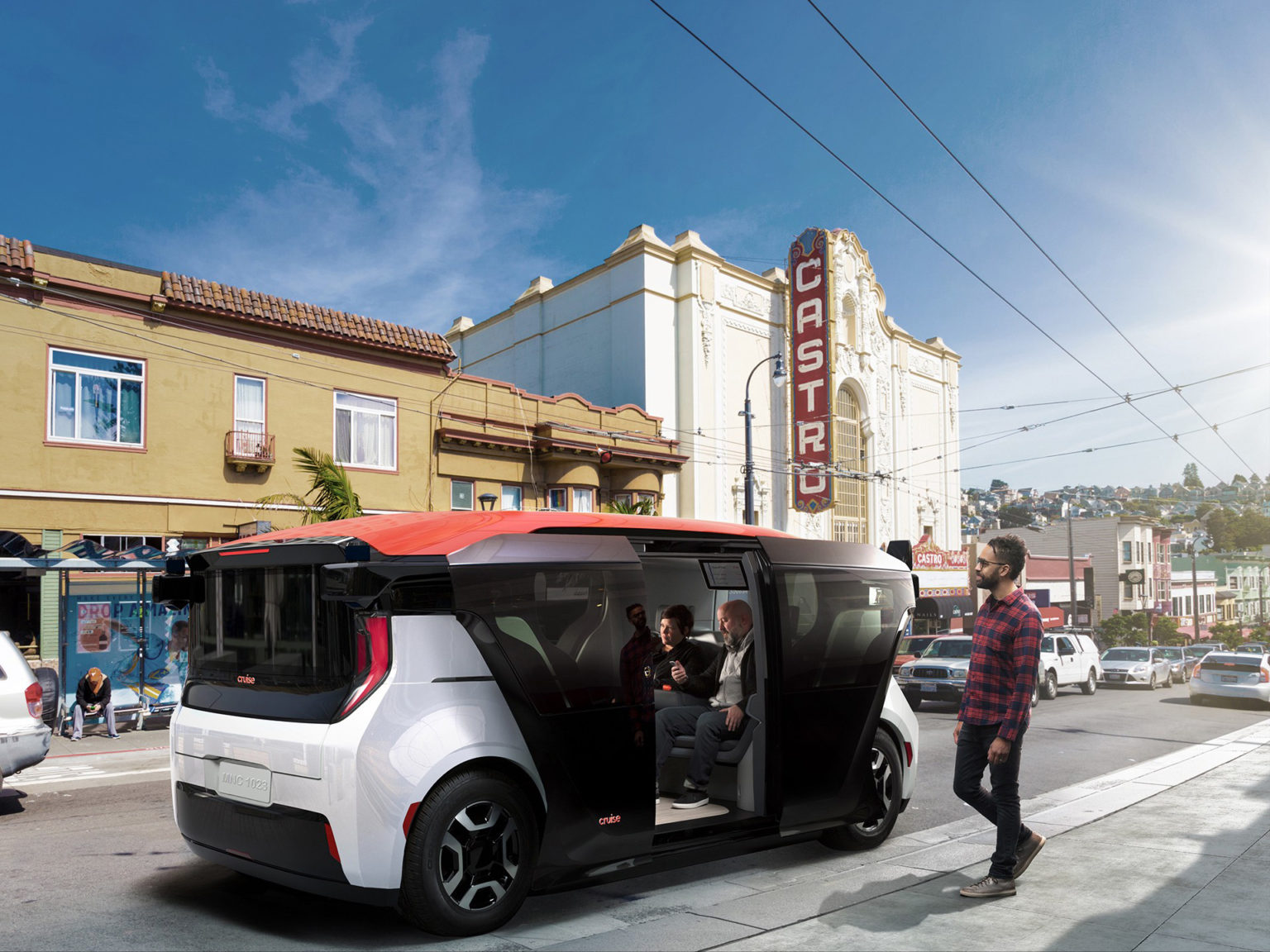Cruise has passed on a steering wheel, a rearview mirror, and pedals in its new Origin electric vehicle. The ride share mobility solution debuted last night in San Francisco was co-developed by the arm of General Motors in cooperation with Honda.
In addition to the self-driving aspect of the news, the biggest innovation with the vehicle is that it is nothing like the any other GM alternative fuel mobility solution. There’s not really speck of Bolt in the design.
It’s actually more like the Navy shuttle than the Bolt, resembling the most modern of train cars. Its exterior is smooth and not aerodynamic. Its sliding doors open wide via a sliding mechanism rather than outward like a traditional car door. There’s a display area featuring a number on the outside of the vehicle to help with rider-vehicle identification.
The Origin is the same size as a full-size sedan but seats six in a different configuration than the typical car. It has a 78-inch height, which means it can still park in most garages.
Inside, the vehicle seats six on two sets of three seats that share a large space for legroom and bags.
What’s more notable is what the Origin is lacking. There’s no driver’s seat, pedals, steering wheel, windshield wipers, gauges, nor rearview mirror. Because there’s no driver, there’s no need for that. Cruise has said that the vehicle features SAE Level 4 autonomy. In layman’s terms, that means that a computer controls all the functionality of the vehicle and is contained within its service area only by things like a speed limiter or geofence.
Its software has been co-developed by GM and Honda.
Cruise hasn’t divulged powertrain or range information.
In January, the federal government released a new set of guidelines concerning self-driving vehicles.
Under Cruise’s plans, no individual will own the Origin. The ride sharing vehicles will be summoned via an app and offer ride service to anywhere in the vehicle’s service area. The defined regions of the service area and fares associated with a ride have yet to be announced.
So, it’s just an app-controlled electric short bus, right? Yes.
Cruise says that the model is ready for production and plans to that end will be announced shortly.








